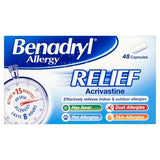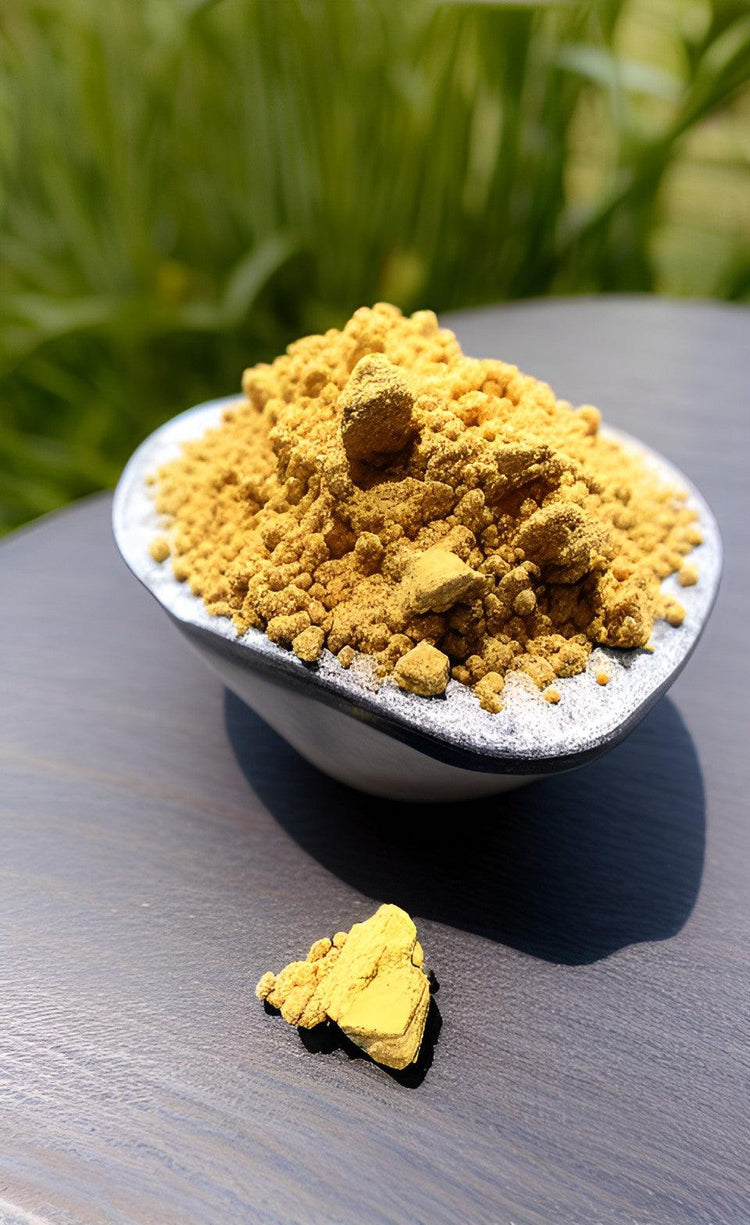
 Instagram
Instagram
Pineapple Allergies: Causes, Symptoms, and Cross-reactivity


Related products
Overview of pineapple allergies
Pineapple allergies are a type of food allergy that affects a small percentage of the population. Individuals with this allergy experience adverse reactions when they consume pineapple or products containing pineapple. According to Dr. Jennifer Ashton, a board-certified allergist, pineapple allergies are relatively rare compared to other food allergies like those to peanuts, milk, and eggs. Nevertheless, it is essential to understand and recognize the signs and symptoms to manage the allergy effectively and avoid severe reactions.
Pineapple allergies, while relatively rare, can cause a variety of symptoms. These can sometimes be confused with oral allergy syndrome (OAS), a condition triggered by fresh fruits. To accurately determine whether symptoms stem from an actual allergy or a different intolerance, many find it helpful to start with a Food Intolerance Test to rule out sensitivity-related responses and guide further medical consultation.
Importance of understanding food allergies
Understanding food allergies is critical because they can cause severe reactions and even be life-threatening in some cases. According to the American Academy of Allergy, Asthma & Immunology (AAAAI), food allergies affect approximately 5-10% of children and 1-2% of adults. By understanding the causes, symptoms, and management strategies of food allergies, affected individuals can take appropriate precautions to minimize the risk of adverse reactions and improve their overall quality of life.
Prevalence of pineapple allergies
Although pineapple allergies are not as common as other food allergies, they can still significantly impact those affected. A study published in the International Archives of Allergy and Immunology found that pineapple allergies have a prevalence rate of about 0.8% among 14,000 patients tested for food allergies. This prevalence may vary depending on geographical regions and genetic predispositions, but it highlights the importance of raising awareness about pineapple allergies and providing appropriate resources for affected individuals. Those looking for an in-depth analysis of both food and environmental triggers can consider the Premium Intolerance Test, which screens over 200 potential allergens.
Individuals who experience difficulty breathing or other allergic reactions after eating pineapple might be suffering from a pineapple allergy, which is a specific type of food allergy. While oral allergy syndrome (OAS) is commonly associated with reactions to fresh fruits like fresh pineapple or pineapple juice, the symptoms of a pineapple allergy can be more severe. If you suspect a pineapple allergy, it is essential to seek medical advice for a proper diagnosis. Allergy testing can confirm whether you have an allergy to pineapple, and healthcare providers can offer guidance on managing your symptoms and avoiding triggers.
Causes of Pineapple Allergies
Definition of food allergy
A food allergy occurs when the immune system mistakes a specific food protein as harmful and overreacts, releasing chemicals like histamine. Bromelain, a protein enzyme in pineapple, is a common allergen. Similarly, profilin found in pineapple and other fruits may cause cross-reactive symptoms. To identify if environmental allergens might be compounding pineapple-related symptoms, the Environmental Intolerance Test offers insights into reactions triggered by pollen, mould, and airborne irritants.
The role of the immune system
The immune system plays a crucial role in protecting the body from harmful substances, such as bacteria and viruses. However, in the case of food allergies, the immune system overreacts to certain proteins in food, triggering a cascade of events that lead to allergy symptoms. Dr. Rebecca M. Gruchalla, an allergist and immunologist at the University of Texas Southwestern Medical Center, explains that the immune system of a person with a food allergy produces specific antibodies called immunoglobulin E (IgE) in response to the allergenic proteins.
Immunoglobulin E (IgE)
IgE antibodies are responsible for binding to the allergenic proteins and initiating an immune response. When the body encounters the allergen again, the IgE antibodies recognize it and signal immune cells called mast cells to release histamine and other inflammatory substances, leading to allergy symptoms.
Mast cells
Mast cells and histamine release
Mast cells are immune cells found throughout the body, particularly in tissues that come into contact with the external environment, such as the skin, respiratory tract, and gastrointestinal tract. When activated by IgE antibodies bound to an allergen, mast cells release histamine and other inflammatory substances, which cause various symptoms associated with an allergic reaction. According to a study published in the Journal of Allergy and Clinical Immunology, mast cells play a central role in both immediate and late-phase allergic reactions, making them a key target for allergy treatment.
Pineapple allergens
Pineapple allergies are triggered by specific proteins present in the fruit. These proteins can cause an immune response in susceptible individuals. Some of the most common allergens found in pineapple include bromelain, profilin, and other pineapple proteins.
Bromelain
Bromelain is a mixture of enzymes found in pineapple, particularly in the stem and fruit. It is commonly used as a meat tenderizer, dietary supplement, and for various medicinal purposes. However, for some individuals, bromelain can act as an allergen, triggering an immune response. A study published in the Annals of Allergy, Asthma, and Immunology found that individuals with pineapple allergies often have IgE antibodies specific to bromelain, which can cause allergic reactions.
Profilin
Profilin is another protein found in pineapple that can act as an allergen. It is also present in many other fruits, vegetables, and pollen, leading to cross-reactivity among these allergens. According to a research article in the International Archives of Allergy and Immunology, profilin can cause allergic reactions in individuals with sensitization to this protein, resulting in symptoms such as oral allergy syndrome, urticaria, and angioedema.
Other pineapple proteins
In addition to bromelain and profilin, other pineapple proteins can also act as allergens, although they are less common. For example, a study in the journal Allergologia et Immunopathologia identified a 7-kDa pineapple protein that caused an allergic reaction in a patient with a history of pineapple allergy. Further research is needed to fully understand the potential allergenicity of various pineapple proteins and their role in triggering allergic reactions. This article was made possible by Welzo, the online medical journal, which provides up-to-date information on various health topics. For more information on pineapple allergies, their causes, and management strategies, please visit Welzo's website.
Symptoms of Pineapple Allergy
Mild symptoms
Mild symptoms of pineapple allergy are usually not life-threatening but can cause discomfort for affected individuals. Common mild symptoms include itching, hives or rash, and swelling.
Itching
Itching, also known as pruritus, is a common symptom of food allergies, including pineapple allergy. It occurs when histamine is released from mast cells in response to allergens. Dr. Scott Sicherer, a professor of pediatrics, allergy, and immunology at the Icahn School of Medicine at Mount Sinai, states that itching can affect various parts of the body, such as the mouth, throat, eyes, and skin, causing significant discomfort for the individual.
Hives or rash
Hives, also known as urticaria, are raised, red, and itchy welts on the skin that can appear during an allergic reaction. They can vary in size and shape and may last for a few hours to several days. A rash, on the other hand, is a broader term that refers to any change in skin color, texture, or appearance. In the context of a pineapple allergy, a rash may present as red, itchy patches or small bumps on the skin.
Swelling
Swelling, also called angioedema, is another common symptom of food allergies. It occurs when fluid accumulates in the tissues beneath the skin, causing localized swelling. In a pineapple allergy, swelling may affect the face, lips, tongue, or other areas where the allergen has come into contact with the skin.
Moderate symptoms
Moderate symptoms of pineapple allergy can be more concerning and may require medical attention. These symptoms include gastrointestinal issues and respiratory symptoms.
Gastrointestinal issues
Individuals with a pineapple allergy may experience gastrointestinal symptoms, such as nausea, vomiting, abdominal pain, and diarrhea. According to Dr. Robert Wood, an allergist and immunologist at Johns Hopkins Medicine, these symptoms result from the immune system's response to the allergen, causing inflammation and irritation in the gastrointestinal tract.
Respiratory symptoms
Respiratory symptoms can also occur in individuals with a pineapple allergy, including nasal congestion, sneezing, coughing, and wheezing. These symptoms are caused by the release of histamine and other inflammatory substances, which can lead to constriction of the airways and increased mucus production.
Severe symptoms
Severe symptoms of pineapple allergy are rare but can be life-threatening if not treated promptly. These symptoms include anaphylaxis and signs of anaphylactic shock.
Anaphylaxis
Anaphylaxis is a severe, potentially life-threatening allergic reaction that can occur rapidly after exposure to an allergen. In the case of pineapple allergy, anaphylaxis may involve difficulty breathing, a rapid or weak pulse, a drop in blood pressure, and a sense of impending doom. If you suspect someone is experiencing anaphylaxis, call emergency medical services immediately and administer an epinephrine auto-injector if available.
Signs of anaphylactic shock
Anaphylactic shock is a severe form of anaphylaxis characterized by a rapid onset of symptoms and a life-threatening drop in blood pressure. Signs of anaphylactic shock may include confusion , dizziness, difficulty breathing, chest pain, weak or rapid pulse, and unconsciousness. Anaphylactic shock requires immediate medical intervention, as it can be fatal without prompt treatment.
Diagnosis and Testing
To diagnose a pineapple allergy, doctors may recommend skin prick tests, blood tests, and oral food challenges. However, due to symptom overlaps with other conditions, a more comprehensive approach is often needed. The Combined Allergy and Intolerance Blood Test is a valuable tool that evaluates multiple allergic and intolerance responses in a single analysis, helping distinguish between true allergies and other sensitivities.
Medical history and physical examination
A thorough medical history and physical examination are essential in diagnosing a pineapple allergy. The healthcare provider will ask about the patient's symptoms, their onset, and any potential exposure to pineapple or related products. They will also examine the patient for any physical signs of an allergic reaction, such as hives, rash, or swelling.
Skin prick test
A skin prick test is a common diagnostic tool for food allergies, including pineapple allergy. In this test, a small amount of the allergenic extract is applied to the skin, and a tiny needle is used to prick the skin's surface. If the patient is allergic, a raised, red, itchy bump called a wheal will form within 15-20 minutes. Dr. Carla Davis, an allergist and immunologist at Texas Children's Hospital, states that a positive skin prick test, along with a consistent history of allergic reactions, can help confirm the diagnosis of a pineapple allergy.
Blood tests
Blood tests can also be used to diagnose a pineapple allergy. These tests measure the level of pineapple-specific IgE antibodies in the patient's blood. A higher level of these antibodies may indicate an allergy to pineapple. However, blood tests alone are not sufficient to confirm a diagnosis, as some individuals may have elevated IgE levels without experiencing allergic reactions.
Oral food challenge
An oral food challenge is considered the gold standard for diagnosing food allergies, including pineapple allergy. During this test, the patient is given gradually increasing doses of pineapple or a placebo under medical supervision. The healthcare provider will closely monitor the patient for any signs of an allergic reaction. If a reaction occurs, the test is stopped, and the patient is treated accordingly. If the patient tolerates the highest dose without any symptoms, the pineapple allergy can be ruled out. However, this test should only be conducted by experienced healthcare providers in a controlled medical setting due to the risk of severe allergic reactions.
Management and Treatment
Avoidance of pineapple and related products
The primary method of managing pineapple allergy is avoiding the consumption of pineapple and products containing pineapple. This includes checking food labels for any pineapple-derived ingredients, such as pineapple juice, pineapple concentrate, or bromelain. It is also essential to be cautious when eating out, as some restaurants may use pineapple in unexpected dishes or as a garnish.
Reading food labels
Carefully reading food labels is crucial for individuals with a pineapple allergy. Ingredients derived from pineapple may be present in various food products, including fruit salads, smoothies, desserts, sauces, and marinades. By being vigilant and reading labels, affected individuals can minimize the risk of accidental exposure to pineapple allergens.
Cross-reactivity with other fruits
Some individuals with a pineapple allergy may experience cross-reactivity with other fruits, such as papaya, kiwi, or avocado. This occurs when the immune system mistakenly recognizes similar proteins in different fruits, leading to an allergic reaction. If you suspect cross-reactivity, consult with an allergist to determine the extent of your sensitivities and to develop an appropriate management plan.
Treating mild to moderate symptoms
Mild to moderate symptoms of pineapple allergy can often be managed with over-the-counter medications, such as antihistamines and corticosteroids.
Antihistamines
Antihistamines, such as diphenhydramine or cetirizine, can help alleviate itching, hives, and swelling by blocking the effects of histamine. They are available in various forms, including tablets, liquids, and creams. It is essential to follow the recommended dosages and consult a healthcare provider if symptoms do not improve or worsen.
Corticosteroids
Corticosteroids, such as hydrocortisone cream, can help reduce inflammation and alleviate symptoms like itching and rash. They should be used as directed by a healthcare provider and are generally not recommended for long-term use due to potential side effects.
Managing severe reactions
Severe allergic reactions to pineapple, such as anaphylaxis, require immediate medical attention and specific interventions.
Epinephrine auto-injectors
Individuals with a known pineapple allergy and a history of severe reactions should carry an epinephrine auto-injector, such as an EpiPen, at all times. Epinephrine can rapidly reverse the symptoms of anaphylaxis by relaxing the airways, increasing blood pressure, and reducing swelling. If you suspect anaphylaxis, administer the auto-injector and call emergency medical services immediately.
Emergency medical care
If a severe allergic reaction occurs, it is essential to seek emergency medical care, even if epinephrine has been administered. Further treatment may be required, and the individual should be monitored for any signs of a delayed or biphasic reaction.
Living with Pineapple Allergy
Education and awareness
Educating oneself about pineapple allergy, its symptoms, and management strategies is crucial for affected individuals. This includes learning about potential triggers, cross-reactivities, and treatment options. Additionally, raising awareness among friends, family members, and colleagues can help create a supportive environment and reduce the risk of accidental exposure.
Allergy-friendly recipes and substitutions
Living with a pineapple allergy does not mean missing out on delicious meals and treats. Many allergy-friendly recipes are available, and pineapple can often be substituted with other fruits or ingredients in recipes. For example,mango or peach can be used in place of pineapple in fruit salads or smoothies, while applesauce or fruit purees can be used as a substitute in baking.
Support networks and resources
Connecting with others who have food allergies, including pineapple allergy, can provide valuable emotional support and practical advice. There are various online forums, social media groups, and local support groups where individuals can share their experiences, tips, and resources. Organizations such as Food Allergy Research & Education (FARE) and the Asthma and Allergy Foundation of America (AAFA) offer information, resources, and support networks for people living with food allergies.
Conclusion
Importance of early diagnosis and management
Early diagnosis and appropriate management of pineapple allergy are crucial for safety and quality of life. Avoiding triggers, using medications when necessary, and consulting an allergist regularly are key steps. For ongoing monitoring or to explore other possible sensitivities, Welzo offers a broad range of options through their Intolerance Tests Collection, making it easier to stay informed and proactive.
Encouraging a safe and inclusive environment for those with food allergies
Creating a safe and inclusive environment for individuals with food allergies, including pineapple allergy, is essential for fostering their well-being and reducing the risk of accidental exposure. This involves raising awareness about the allergy, educating friends, family, and colleagues, and advocating for allergy-friendly policies in schools, workplaces, and public spaces. By working together, we can ensure that people with pineapple allergies and other food allergies can lead safe, healthy lives, free from the fear of severe allergic reactions. Through education, awareness, and support, we can create a more inclusive and understanding society that accommodates the needs of those with food allergies and empowers them to thrive.To learn more about Allergies, read our comprehensive guide that covers: Allergies:, Types, Causes, Symptoms, Diagnosis, and Treatment options. If you are looking for treatments for hay fever or general allergens, then visit our extensive page with allergy and hayfever medication and tablets.





















 Rated Excellent by 26,523+ Reviews
Rated Excellent by 26,523+ Reviews